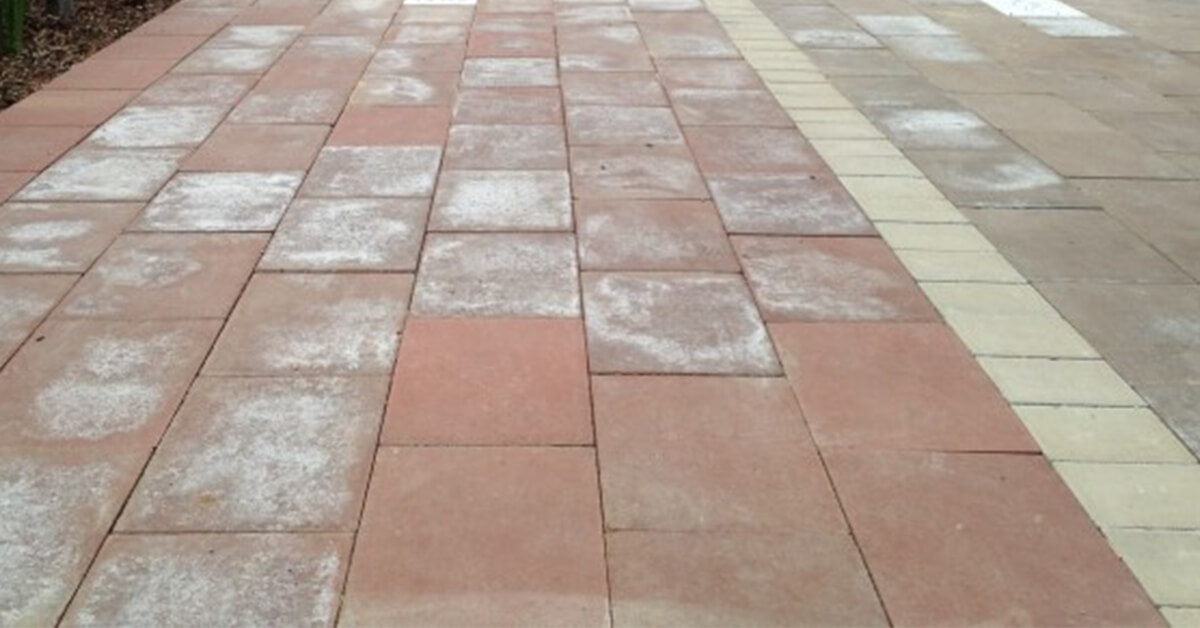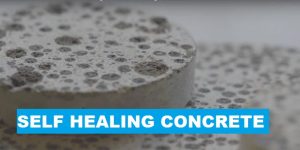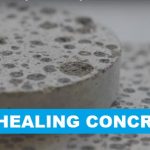Efflorescence has been one of the biggest headaches for concrete product manufacturers. This is very critical for the architecture or aesthetic concrete product manufacturers.
Of course, there many types of products in the market that blatantly claim that their chemical can remove the efflorescence forever. To a certain extent, the chemicals can help to camouflage the effect of efflorescence, but will not eliminate it completely.
Bear in mind, this cleaning process also comes with aesthetic damage to the original colors of the concrete surface (if it is colored concrete products). Another option is to try to wash it away using a pressure washer. These are all just corrective actions and solutions; and none of this is looking at the problem at the fundamental level.
You must understand the underlying phenomenon of efflorescence in order to find any possible solution for it. There are two stages of efflorescence; namely the primary efflorescence and secondary efflorescence.
Efflorescence can be easily explained as white deposits on the concrete surface. However, there is a very broad science behind this phenomenon. Based on the literature, this condition occurs mainly in poorly constructed concrete. Poorly constructed concrete means the one with insufficient curing, and also the one with a significant amount of pores or cracks due to improper compaction.
Efflorescence is actually dried Calcium Carbonate (CaCO3), which formed from the reaction between Calcium Hydroxide (Ca(OH)2) from the hardened concrete and Carbon Dioxide (CO2) in the air. Ca(OH)2 is actually a by-product of the hydration process.
The presence of Ca(OH)2 is proportionate to the presence of C3A content in the cement. Therefore to reduce the Ca(OH)2 content in concrete, the C3A content must be reduced in the cement. One of the ways to reduce the C3A content in cement is by replacing part of the cement with pozzolans (especially the GGBFS).
The pozzolan will react with Ca(OH)2 in the mix, thus reducing or sometimes eliminating the chances of Ca(OH)2 leaching out of concrete. Secondly, by adding pozzolan, the C3A content is reduced, and therefore it creates much lesser Ca(OH)2. This is how the pozzolan helps to reduce efflorescence.
There is also another way of reducing (eliminating) efflorescence on the concrete surfaces. If the calcium hydroxide can be converted into a hydration product, then this will help to reduce the efflorescence problem. The most beneficial hydration product in concrete is the calcium silicate hydrate (C-S-H).
Therefore, a silicate should be introduced in the concrete in order to get the Ca(OH)2 hydrated. The hydration between Ca(OH)2 and silicates will generate C-S-H. Theoretically, it sounds possible, but how and when to introduce the silicates. These are the questions that need to be answered in future research activities.










